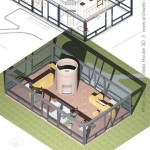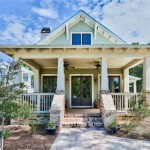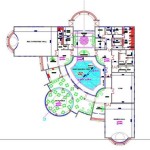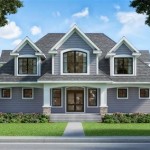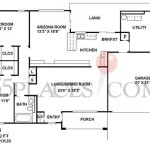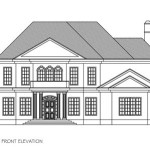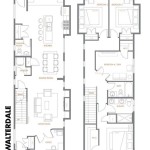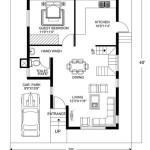Small Rustic Lake House Plans: Design Considerations and Practicalities
Lake houses offer a unique blend of tranquility and recreational opportunities, making them highly desirable retreats. The allure of a small, rustic lake house lies in its simplicity and connection to nature. Designing such a structure, however, requires careful consideration of space optimization, material selection, and integration with the surrounding environment. This article explores the key principles and practicalities involved in planning a small, rustic lake house.
Prioritizing Functional Space within a Compact Footprint
One of the foremost challenges in designing a small lake house is maximizing functionality within a limited area. Careful space planning is paramount to ensure comfortable living without feeling cramped. This involves a strategic approach to room layout and the incorporation of multi-functional elements.
A popular strategy is to adopt an open floor plan that combines the living room, dining area, and kitchen into a single, fluid space. This eliminates the need for dividing walls, creating a sense of spaciousness and facilitating social interaction. The kitchen, in particular, can benefit from a compact design, utilizing vertical storage solutions and efficient appliances. Counter space can be maximized with the use of islands or peninsulas that also serve as informal dining areas.
Bedroom design should prioritize efficiency. Built-in storage solutions, such as drawers under the bed or integrated shelving units, can help minimize clutter. Bunk beds are a practical option for accommodating more guests or family members in a smaller space. Closets should be designed to maximize vertical space and incorporate adjustable shelving.
Bathrooms, often the smallest rooms in a house, require meticulous planning. Wall-mounted sinks and toilets can save floor space, and shower stalls are generally more space-efficient than bathtubs. Incorporating natural light through a strategically placed window can further enhance the feeling of spaciousness. Pocket doors, which slide into the wall, are an excellent alternative to traditional swinging doors in tight spaces.
Outdoor living spaces, such as decks or patios, are critical extensions of a small lake house. They provide additional areas for relaxing, dining, and entertaining, effectively expanding the usable living space. Designing these areas to be easily accessible from the interior can blur the lines between indoors and outdoors, creating a seamless transition.
Material Selection for Rustic Aesthetics and Durability
The choice of materials is crucial for achieving the desired rustic aesthetic and ensuring the longevity of the lake house. Rustic design typically emphasizes natural materials, such as wood, stone, and metal, that evoke a sense of warmth, authenticity, and connection to the surrounding environment.
Wood is a cornerstone of rustic design. Reclaimed wood, in particular, adds character and history to a structure. It can be used for exterior siding, interior paneling, flooring, and furniture. Different types of wood, such as cedar, pine, and oak, offer varying degrees of durability and aesthetic appeal. It is imperative to treat wood properly to protect it from moisture, insects, and rot, especially in a lakeside environment.
Stone is another essential element of rustic design. It can be used for exterior accents, such as chimneys and foundations, as well as interior features, such as fireplaces and accent walls. Natural stone adds texture and visual interest to a space. When selecting stone, consider its color, texture, and durability. Locally sourced stone can further enhance the connection to the surrounding environment and reduce transportation costs.
Metal accents can add a touch of industrial chic to a rustic design. Wrought iron railings, light fixtures, and hardware can complement the natural materials and create a cohesive aesthetic. Copper and bronze are also popular choices for their warm tones and durability. Metal roofing can provide long-lasting protection from the elements and contribute to the rustic character of the building.
Other materials to consider include natural fiber rugs, linen fabrics, and handcrafted pottery. These elements can add texture and warmth to the interior, creating a comfortable and inviting atmosphere. The key is to select materials that are durable, sustainable, and aesthetically consistent with the rustic design theme.
Integrating the Lake House with the Natural Environment
A well-designed lake house should seamlessly integrate with its natural surroundings. This involves considering the layout of the house in relation to the lake, maximizing views, minimizing environmental impact, and incorporating sustainable design principles.
The orientation of the house should be carefully considered to maximize views of the lake and capture natural light. Large windows and sliding glass doors can provide panoramic views and flood the interior with sunlight. A south-facing orientation can maximize solar gain in the winter, reducing heating costs. Overhanging eaves or awnings can provide shade in the summer, preventing overheating.
Preserving the natural landscape is crucial for minimizing environmental impact. Avoid excessive clearing of trees and vegetation, and work with the existing topography to minimize site disturbance. Consider using native plants in landscaping, as they are adapted to the local climate and require less water and maintenance. Properly designed drainage systems can prevent erosion and protect the lake from pollution.
Sustainable design principles can further enhance the environmental friendliness of the lake house. Consider using energy-efficient appliances, insulation, and windows to reduce energy consumption. Solar panels can provide a renewable source of electricity, and rainwater harvesting systems can collect water for irrigation or other non-potable uses. Composting toilets can reduce water consumption and minimize sewage waste.
Building materials should be selected with sustainability in mind. Reclaimed wood, recycled metal, and locally sourced stone are all environmentally friendly options. Avoid using materials that contain harmful chemicals or require excessive energy to produce. Consider obtaining certifications, such as LEED or Energy Star, to demonstrate commitment to sustainable design.
Outdoor lighting should be designed to minimize light pollution and protect wildlife. Use shielded fixtures that direct light downwards and avoid over-illuminating the property. Motion sensor lights can provide security while conserving energy. Consider the impact of lighting on nocturnal animals and avoid using bright or colored lights that can disrupt their behavior.
Access to the lake should be carefully planned to minimize erosion and protect water quality. Use designated pathways to prevent trampling of vegetation, and install erosion control measures where necessary. Consider building a dock or pier to provide access to the lake without disturbing the shoreline. Avoid using motorized boats in sensitive areas to protect aquatic habitats.
In conclusion, designing a small, rustic lake house requires a holistic approach that considers functionality, aesthetics, and environmental impact. By prioritizing functional space, selecting appropriate materials, and integrating the house with the natural environment, it is possible to create a tranquil and sustainable retreat that embodies the spirit of lakeside living.

Small Lake Cottage Floor Plan Max Fulbright Designs

3 Bedroom Small Sloping Lot Lake Cabin By Max Fulbright House Plans Houses

Rustic Cottage House Plan Small Cabin

Rustic Lake House Home Bunch Interior Design Ideas

Rustic Vacation Homes Simple Small Cabin Plans Houseplans Blog Com

Rustic Cottage House Plan Small Cabin

Open Concept Small Lake House Plans Houseplans Blog Com

Lake Cabin House Plan 1 Bedrms Baths 576 Sq Ft 100 1315

Plan 92379mx 3 Bed Cottage Escape With Vaulted Ceilings Rustic House Plans Stone Lake

Lake Home Plan 2 Bedrms 1 Baths 629 Sq Ft 126 1839

